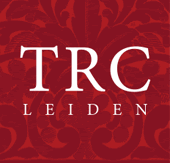When Marilyn Monroe donned a burlap potato sack in 1952, she was making various statements about herself, her wardrobe and her ability to wear anything glamorously. But she was following in a long tradition that is found in many countries around the world, namely the wearing of sacks when almost nothing else is available.
Clothing made from old sacks has been used for centuries to provide basic garments at very low cost. During the Depression in North America, in the 1930’s, clothing made from sacks was an important source of garments for many families. But instead of it vanishing as the economic situation improved by the 1940’s, the wearing of sack clothing was regarded by many as a patriotic duty and in the 1950’s the garments were seen as fashionable items that were worn by men, women and children throughout the American continent. But it has to be admitted: these were not any old sacks, but they were especially printed with a wide range of decorative designs in a variety of colours and sizes.
But what exactly is a feedsack? They have various other names, including flour sacks, flour bags, cotton bags, commodity bags, as well as more poetically, ‘chicken linen’, ‘hen house linen’ and ‘pretties’. Essentially they are cotton sacks that are used to store items such as flour, beans, maize, rice and sugar, as well as feed for calves, chickens and pigs.
Regional and national companies sold these sacks, with their contents, to a generally male clientele of farmers. Once the message got through that the sacks themselves were just as interesting, if not more so, than the contents, the established custom of choosing the sacks on the basis of quality, contents and price totally changed. There are many contemporary comments about a farmer or his sons being given a piece of cloth and told to match it at the feed store!
 Libelle, October 1948, No. 27, p. 20. TRC Library.
Libelle, October 1948, No. 27, p. 20. TRC Library.
 Libelle, October 1948, No. 27, p. 21. TRC Library.
Libelle, October 1948, No. 27, p. 21. TRC Library.
Libelle and feedsacks
Just after the Second World War, the Dutch magazine Libelle (October 1948, No. 27, pp. 20-21) included an article called Zaklopen op z’n Amerikaans (“Sackraces the American way’). It told the story of decorative American feedsacks and how they were used to dress fashionable young women. The article also suggested that something similar could happen in The Netherlands. At the time, thanks to the horrendous shortages caused by the Second World War, many Dutch men, women and children were wearing clothing made from feedsacks, but not the deliberately decorated forms.
Gradually memories of simple and undecorated feedsack garments have passed into Dutch family tales and traditions. In America, the memory of how a decorated feedsack helped feed and clothe the continent is also fading, but the use of feedsacks may again become appealing, as the concept of sustainability has become well established in the lives of many people throughout the world.


